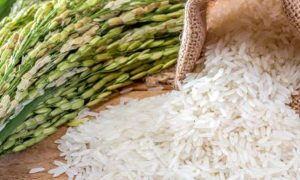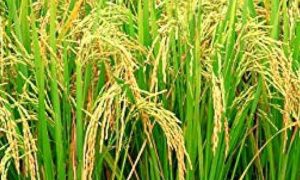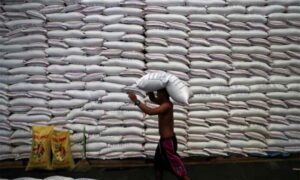Raging rice prices

LAST week, when I looked at international prices for Vietnam rice, well-milled (5-percent broken) was almost hitting the $650 per metric ton mark, whereas it was lower than $500 a few months ago. Similarly, it was reported that Thai 5-percent broken rice had breached $700 when it was less than $600 earlier this year.
Undeniably, the Indian government’s decision to ban exports of non-basmati (white) rice triggered speculative activities in international rice trading. Indian rice constitutes 40 percent of total world export supply. Although non-basmati rice makes just a quarter of total Indian exports, it is still a substantial amount withdrawn from the world market.
The other factor driving international rice prices upwards is the intensifying conflict between Ukraine and Russia. Russia is an oil exporter, and inorganic fertilizer is mainly extracted from oil. An increase in oil prices leads not only to a rise in transportation costs but also those of running farm machinery and other equipment (e.g., irrigation pumps, milling machines, etc.) that use fuel.
Ukraine, meanwhile, is a major supplier of wheat and corn. The bombings of grain warehouses in Ukrainian ports by Russia results in the shortage of these cereals in the world market. Consumers in other countries whose staple is bread (made from wheat) have no option but to shift to consuming rice. Most of these consumers are in poor sub-Saharan and North African countries.
Unfortunately, all these challenges have simultaneously happened during the lean palay (unmilled rice) harvest season in the Philippines. May to August coincide with the local palay planting season and hence there is not much harvest that traders or the National Food Authority (NFA) can buy. Buyers will have to depend on imports whose prices, unlucky for us, are skyrocketing.
Our elbow room to maneuver given the current situation is to say the least tight. The most logical option is for the private sector to import so that the shipments arrive when we need them most, which are the months of August to September. If the government does the importation, it will be delayed because it needs to raise the funds, negotiate with foreign exporters and ship the imports.
Most likely, government imports will arrive at the peak of the harvest season, sometime in late October, November and December. This will lead to a significant decline in the farmgate prices of palay and expectedly hurt our palay farmers.
The Department of Agriculture has assured the public that around 300,000 metric tons of rice imports will arrive this month. Another equivalent amount or higher may arrive in September. However, it was reported that traders in the exporting countries are raising their prices, reneging on previously agreed lower prices.
Private sector importers complain that they do not have the money to cover the additional price increases. They fear that given market instability, there is no assurance that their losses will be covered, assuming prices start to decline a few months once rice imports arrive.
The quagmire we are in has triggered numerous calls for the revision of Republic Act 11023 or the “Rice Tariffication Law (RTL).” The RTL prohibited the NFA from importing but stipulated that it should build a buffer stock for emergency purposes. The stock should be sourced from local farmers, which is a good idea because we are using government funds to patronize local produce.
However, the NFA has reported that the nine-day recommended buffer stock was down to two days and that it could not procure palay because prices were now beyond its stipulated buying price of P19 per kilo.
It was reported by a farmers’ lobby group that this happened because the NFA diverted its stocks to Kadiwa stores to partially fulfill the President Ferdinand Marcos Jr.’s pronouncement of selling rice at P20 per kilo (Kadiwa stores sold it at P25).
As for the P19 per kilo price ceiling, all it requires is for the NFA Council to approve a higher procurement price to enable the agency to buy the palay harvests of farmers at P21 or P25 per kilo.
Note that the RTL is being blamed for its inability to arrest the rising rice prices. A couple of years and a year ago during the peak harvest season, it was being blamed by detractors for falling prices of palay.
The irony of it is that significant increases in rice prices also happened in the past, particularly in 1995, 2008 and 2018 before the passage of RTL in 2019. Similarly, the decline in rice prices normally happened during the wet harvest season, which is the peak harvest season and when drying palay is more challenging, years and decades before the RTL became a law.
It should also be noted that the midterm review of RTL should have been conducted last year or three years after its passage in February 2019. This is one of the provisions clearly stipulated in the law.
Congress did not have the time to conduct it last year when we did not have this rice problem. With the temporary rice crisis we are currently experiencing, it seems that Congress is now interested in doing so because the quagmire we are in provides its members ample media opportunities.
It is critical that we inject scientific analysis to the situation instead of responding in a knee-jerk fashion. What lessons did we learn from the 2008 and 2018 rice crises? Did prices remain elevated for a year or two, or are we only experiencing a temporary upward glitch? If it is a temporary phenomenon, will the proposed solutions create more problems in the future? Will we resurrect all the ills of the previous rice policy regime just because we are in panic mode?
My take is that we need to mobilize our economists, particularly agricultural economists and rice scientists, to undertake a more long-term (even midterm) view of the rice industry and how it is affected by the dynamics of the international rice trade and then goad them to formulate a mathematical model to forecast future rice prices under varying scenarios.
Pandering to our emotions, ideologies or to the views of pamphleteers will only aggravate the current situation instead of alleviating it. Let us inject science, scrutinize the empirical evidence and be guided by the results in addressing our rice problem.
The great science writer Isaac Asimov once said: “The saddest aspect of life right now is that science gathers knowledge faster than society gathers wisdom.”
Source Link: https://www.manilatimes.net/2023/08/25/business/top-business/raging-rice-prices/1906862















